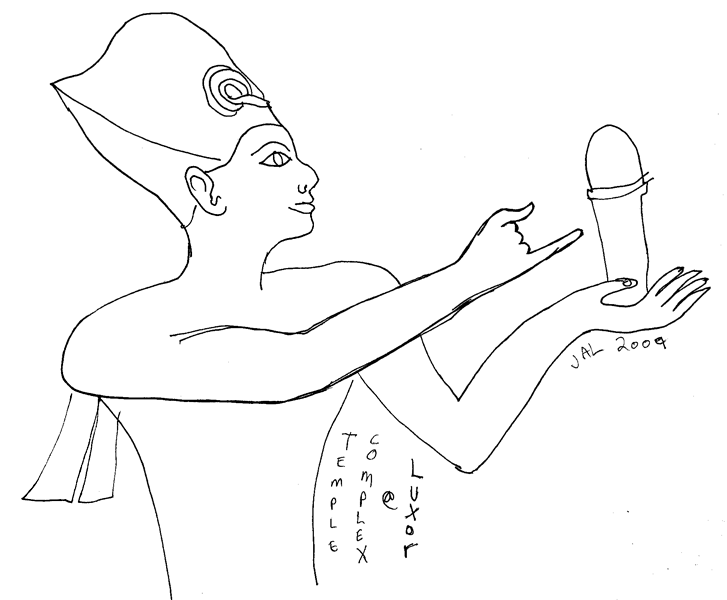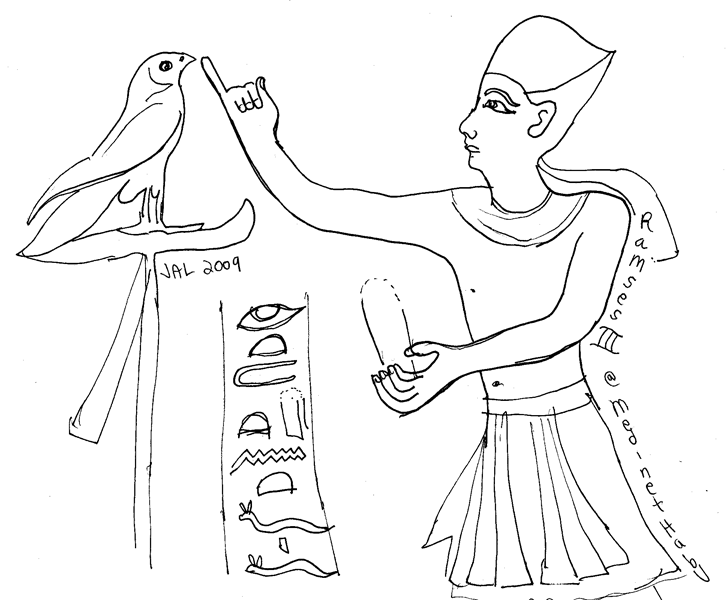
Wednesday, April 8, 2009
"Circling the Web and Gesturing"
6:20am

Wednesday, April 8, 2009
"Circling the Web and Gesturing"
6:20am
|
For the past few days I've been busy following the link trail of the Egyptian art pool at Flicker. While waiting for pictures to load, I've been polishing the pendant. Oh, my surprise, when I learned _I_ would have to do the bulk of the polishing, with sandpaper in 400, 600 and finally 1200 grits. It's awfully slow going. So whenever I'm watching TV or waiting for the web I make double use of the time, moving the pendant in circular motions on the sandpaper. I've been vicariously enjoying the travel of others. They've taken some good photos, so their eyes must do for mine, still here in Yuma. I've noted with curiousity about the gestures the pharoah makes in two different reliefs: |


The temple of pharaoh Ramses III at Medinet Habu
|
One commenter opined "The king making the ritual offering of the goddess ma'at; the symbol of cosmic order and righteousness." Hmm, I wasn't sure, so I asked my knowledgeable colleagues, who knew right where to point me. The gesture is significant in the "Opening of the Mouth" ceremony. Ann Macy Roth explains "Here its central act, the opening of the mouth itself, is shown to mimic the clearing of a newborn's mouth with the little fingers.", in "Fingers, Stars, and the 'Opening of the Mouth': the Nature and Function of the Ntrwj-blades". The 'Opening of the Mouth' is done for the deceased, that he might be able to speak and take in nutrition in the afterlife. "Why should a newly reborn king need to have his mouth opened? At birth, a baby's mouth is obstructed by mucus that must be cleared before the baby can breath. In modern births, the mouth is cleared using a bulb syringe, but the physician's little finger is also put into the mouth to test for any abnormalities of the palate. The small size, softness and sensitivity which make the little finger appropriate for this task would make it equally suitable for cleaning the mouth." (Ibid) This symbolic 'mouth clearing' gesture is also done to statues, giving them 'life'. Ramses III is thereby giving the statue of Horus 'life' by his gesture. Also, mouth clearing can also be combined with 'annointing' rituals, "A similar gesture, in which one little finger is offered while the other hand holds the jar, continues to be the typical gesture for anointing throughout Egyptian history."(Ibid) In both the Luxor and the Medinet Habu scenes, the pharoah is also holding a jar.
|
Go Back to Archives...
Go Back to Main Journal Index Page...
Go to Index of Joan's pages...
![]()
© Joan Lansberry